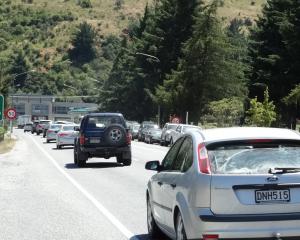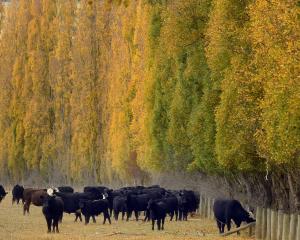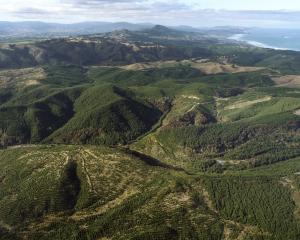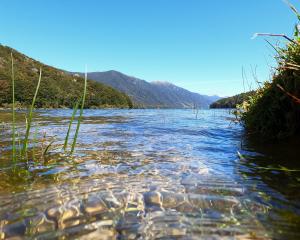A landscape time-lapse.
Some years ago, when my husband and I were dairy farming, we had an urban friend visit. She was showing some interest in the farm and asked if we milked the cows.
We didn't quite understand her question - thought there must be a trick in it. ''Yes'', we answered, ''it's a dairy farm''. Of course, to us, this was pretty obvious given that we were in the middle of the Taieri Plains surrounded by black and white cows.
''So, do you milk the cows?'' she persisted, clearly not equating black and white cows on flat paddocks eating ryegrass as definitive milking animals. We then realised she wasn't trying to catch us out and I went on to explain the difference between a dairy farm and a sheep and beef farm while my husband stifled his laughter.
It makes me wonder how many New Zealanders drive around our countryside not appreciating the difference between one farm type and another. It's not so much ignorance as not really giving a damn.
Earlier this year, when travelling around the Cotswolds with my brother - who lives there - I was buzzing about seeing acres of golden canola flowers and green wheat. I pointed out to him how much cropping there was, and, as a horse vet who drives rural roads every day, he said ''yeah, I suppose there is, never really thought about it much''.
In other words, you and your crops are pretty boring Anna - but I'll drive for miles to see a flaming horse!
For those who do notice these things and who are maybe more advanced in years, I wonder how much you could tell us.
How has the Taieri changed, how has South Otago changed, how has Hokonui changed and most interestingly - what has been tried?
Lately, New Zealand farms have got bigger and become more specialised. Dairy farmers are dairy farmers, cropping farmers are cropping farmers and orchardists are orchardists. Farmers watch over the fence as industries rise and fall, some switching alliances when the return is compelling.
Cropping farms in Canterbury and sheep and beef farms in Southland have been replaced with dairy farms. The hill country in Gisborne, where my grandfather spent much of his life clearing scrub, mostly manuka, is now being re-planted in manuka for honey production.
Imagine if we could place New Zealand landscapes on to a time-lapse film spanning 100 years in the past and future - what would we see?
Nitrogen caps, methane emissions, consumer demands and climate change - slap those on to today's farming landscape and what does the future look like? I saw a climate map of New Zealand in 30 years' time recently with the best spots to grow maize colour-coded.
Right now, you'd choose to grow maize in the Bay of Plenty or Waikato, you wouldn't consider it in Southland. According to climate change predictions, in 30 years' time, best shift your maize growing to Southland.
I also read a science paper recently about wheat being bred to withstand 40.8degC heat in South Asia, replacing rice as a more nutritious community crop.
New Zealand alternate protein company Sunfed Meats produce their ''chicken'' from imported yellow peas. Is there any reason why we couldn't grow the peas in a micro-climate somewhere in New Zealand, would it be cost-competitive? Horticulture is on the rise in New Zealand, kiwifruit, cherries, avocados and hops investment opportunities are selling out.
High-protein based crops such as hemp, barley, beans, amaranth, canola, kumara, linseed, white maize, oats, peas, walnut and wheat are worth re-thinking. A way for livestock farmers to farm productively within environmental caps may mean mixed farming systems, through the introduction of perennial horticultural species or annual crops or both. Uber-type community contracting systems and processing will assist with vertical integration into markets.
The co-ops of the past - meat and dairy companies - may be joined by co-ops of the future to produce oat milk, hemp-seed sports products or pork made from peas. There are people starting to crunch the numbers. It will require bravery, collaboration and entrepreneurship - all of which we have demonstrated in the past.
-Anna Campbell is managing director of AbacusBio Ltd, a Dunedin based agri-technology company.
Comments
Ridgelines and shelter belt. The landscape of North Canterbury once. Not so much macrocarpa: do cattle need arbour shelter? The goss I burnt out in Hurunui (age 14), may have come back. Is there still Rose hip?











